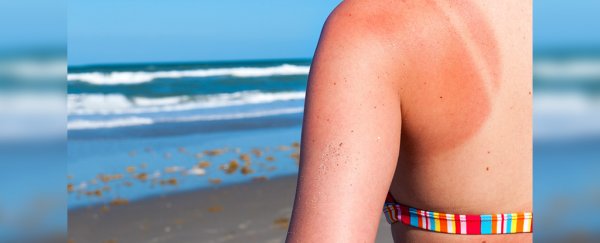Pinterest is a virtual smorgasbord of handy hints that help jazz-up your life on a tight budget. There is, however, a world of difference between sharing your winning design for a cheap unicorn cake and promoting recipes that put people's health at risk.
Amid the site's crowdsourced instructions for DIY moisturisers and deodorants are a plethora of potentially unsafe home-made sunscreens that fall short of providing adequate UV protection.
A recent study by researchers from the Center for Injury Research and Policy at Nationwide Children's Hospital in the US took a close look at the trend of home-made sunscreens on the popular social media website.
If you've somehow escaped it, Pinterest is the online equivalent of a personal scrapbook for sharing interesting snippets found across the internet. Once you find a 'pin' you like, you can save it to your own wall.
Whatever your passion, you'll find somebody who has already cobbled together a library of images and articles - from dogs to tattoos, to pages upon pages of home remedies.
Needless to say, not all of those suggestions come with the stamp of approval from health authorities. And that's a problem.
"The internet is a great place for families to go to for recipe inspiration and arts and crafts projects, but not necessarily for making their own safety-related things," says the study's lead researcher Lara McKenzie.
McKenzie and her team searched through a number of links pinned on Pinterest walls featuring sunscreen recipes. All but a tiny 5 percent were promoting the benefits of a particular recipe. On average, each bookmarked link was saved by another reader more than 800 times. One pin had an impressive 21,700 saves.
The concerning part was 68 percent of the pins featured DIY instructions that had little hope of living up to the standards we need from a sunscreen.
Many of the ingredients in the promoted products include fairly benign materials like coconut oil and beeswax. While there's probably a low chance such chemicals would cause much harm, they'd also do an inadequate job of absorbing ultraviolet (UV) radiation.
Given 30 percent of the pins provided a sun protection factor (SPF) number, ranging from 2 to 50, there's a concern that people might use these DIY versions in place of products that have the approval of health authorities.
"Homemade sunscreen products are risky because they are not regulated or tested for efficacy like commercial sunscreens," says McKenzie.
"When you make it yourself, you don't know if it's safe or effective."
It's shocking that this needs to be said, but a safe sunscreen that offers a suitably high SPF is not a simple thing most of us can throw together using things from an average pantry.
Not only do the chemicals in the sunscreen need to soak up or deflect enough radiation across a broad part of the spectrum to significantly reduce the chance of skin damage, the product needs to stay on your skin long enough to get you through a session in the sun.
Sunscreens also need to be safe, not just for our own bodies but for the environment. And even approved sunscreens can struggle to meet our needs when we don't use them properly.
These aren't trivial points, and authorities such as the US Food and Drug Association (FDA) are constantly looking to improve regulations to make sunscreen products as safe and effective as possible.
"Sunscreen usage has changed, with more people using these products more frequently and in larger amounts," FDA Commissioner Scott Gottlieb said in a statement earlier this year.
"At the same time, sunscreen formulations have evolved as companies innovated. Today's action is an important step in the FDA's ongoing efforts to take into account modern science to ensure the safety and effectiveness of sunscreens."
Last year, the FDA warned consumers against purchasing pills that claimed to offer a degree of sun protection.
At the end of the day, we all want the same things from our sun protection – an easy-to-apply material that doesn't look or feel awful, doesn't smell gross, won't make us (or the environment) sick, and will do a top job when it comes to lowering the risk of skin cancer.
If in doubt, also throw on a broad rimmed hat, a long cotton shirt, and limit your time in the sun.
But seriously, don't skimp on your sunscreen, folks. Not even to get more vitamin D.
This research has been published in Health Communications. (The paper was not yet online at the time of writing, but has since been reviewed in line with our fact-checking policy.)
